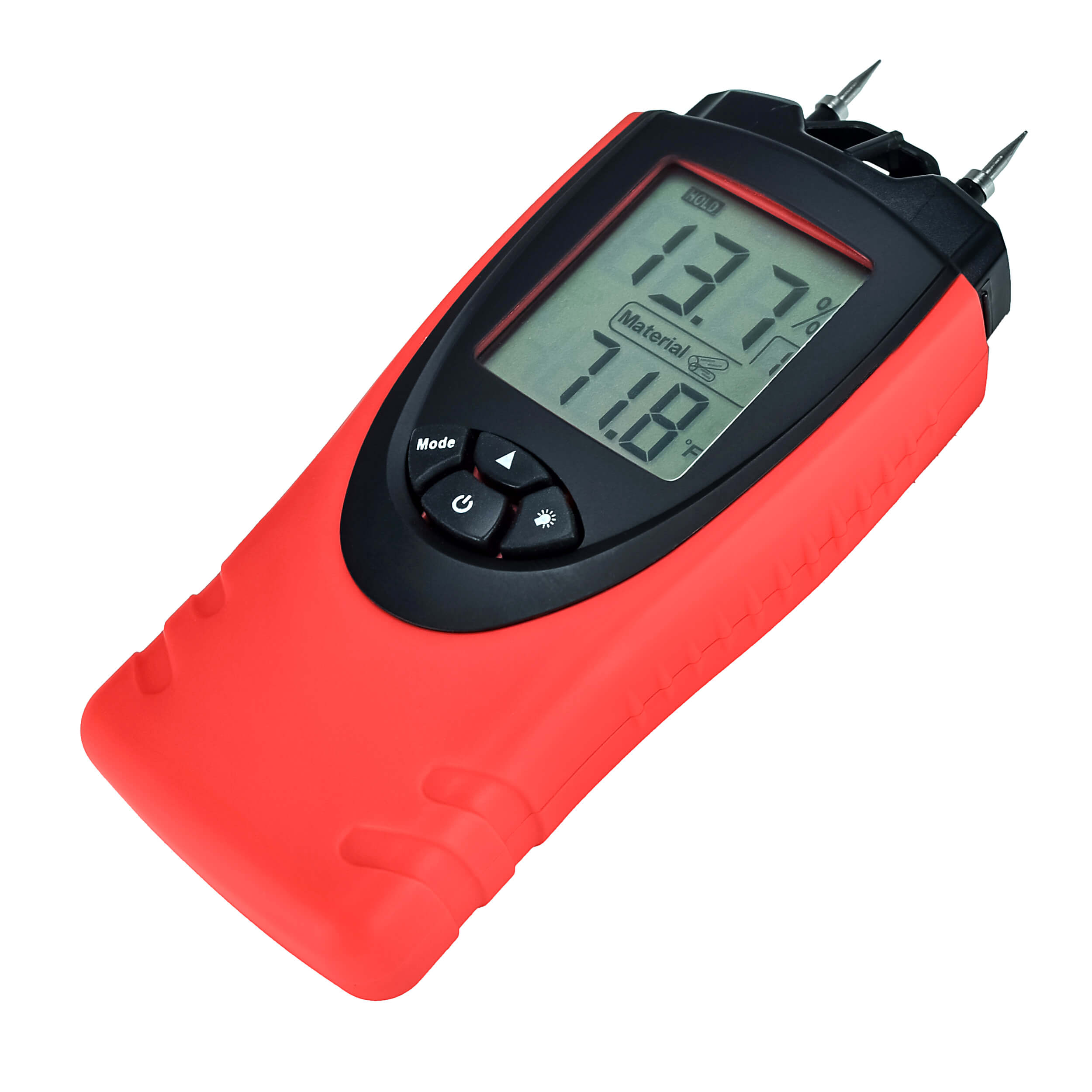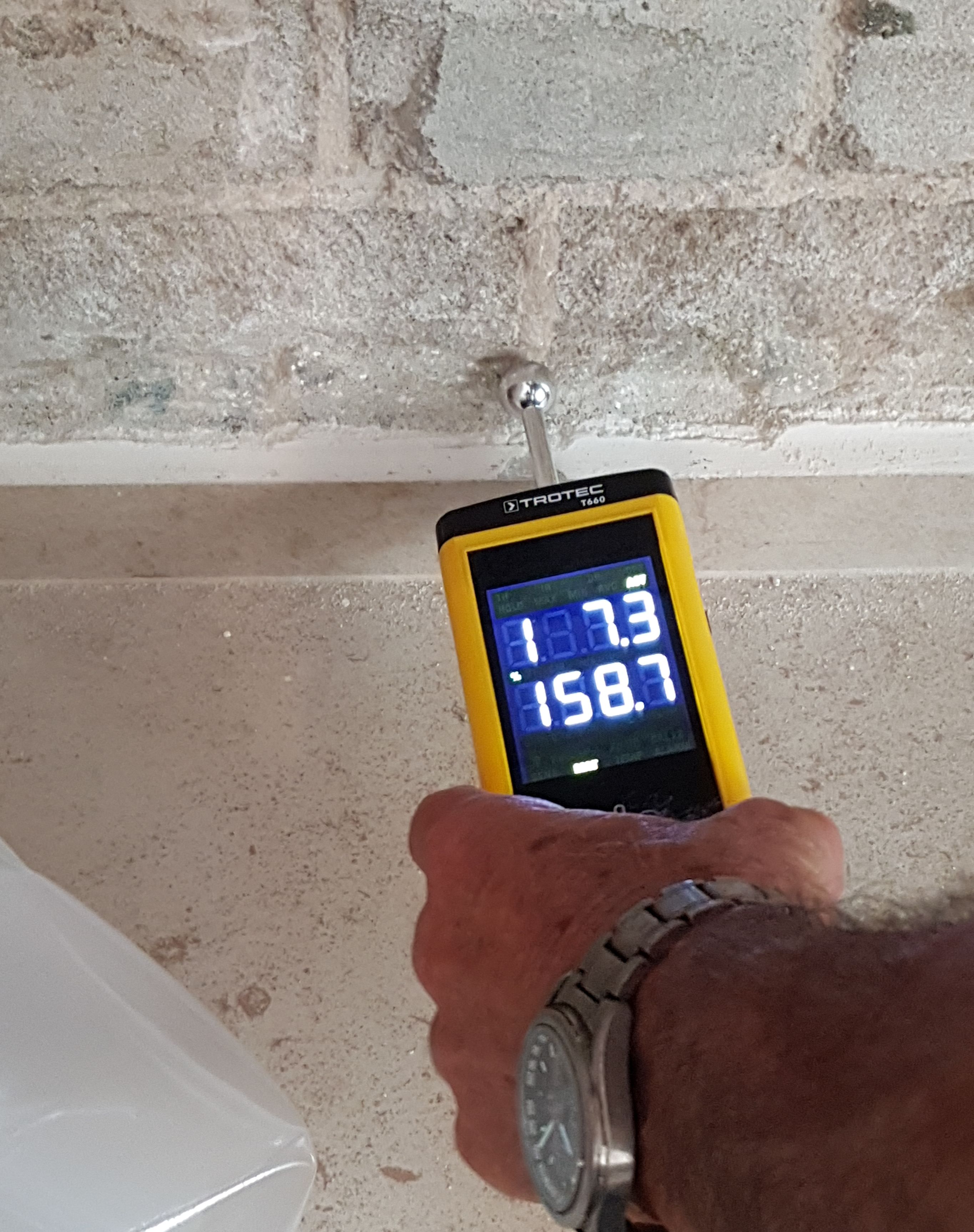Moisture Meter Buying Overview: What to Look for in High-Quality Instruments
Moisture Meter Buying Overview: What to Look for in High-Quality Instruments
Blog Article
Look Into the World of Wetness Meters: Every Little Thing You Required to Know
In the realm of wetness meters exists a world of accuracy and functionality that usually goes undetected. These gadgets, while seemingly uncomplicated, hold a riches of info that can substantially affect different sectors and applications. Comprehending just how moisture meters operate, the different kinds readily available, and their diverse uses can clarify their value in ensuring high quality and performance. By checking out the intricacies of dampness meters, one can discover a beneficial device that goes beyond plain dimension, using understandings that can make a significant difference in countless areas.
How Dampness Meters Work
Wetness meters run by determining the electric conductivity or capacitance of products to figure out the moisture web content present - Moisture Meter. These meters are indispensable tools across numerous sectors, including woodworking, farming, and building. By making use of different techniques such as pinless or pin-type technology, wetness meters offer precise readings that assist specialists make informed choices
Pin-type moisture meters work by placing the sharp pins right into the material being examined. The electrical conductivity between the pins is after that measured, with greater moisture degrees resulting in raised conductivity. On the other hand, pinless dampness meters make use of electromagnetic signals to check a larger location without creating any damages to the product's surface. These meters are suitable for promptly examining dampness levels in large areas or finished items.
Regardless of the technique utilized, wetness meters play an important duty in avoiding problems such as mold development, architectural damages, or product flaws brought on by excess dampness. Understanding exactly how these meters work is necessary for making certain the top quality and honesty of products in various applications.
Sorts Of Moisture Meters
Provided the important duty dampness meters play in numerous sectors, it is important to comprehend the various types offered to specialists for properly assessing moisture degrees. There are largely two major kinds of wetness meters: pin-type and pinless moisture meters.
Pin-type dampness meters make use of 2 pins that are put right into the product being evaluated to measure the electric resistance in between them. This technique is frequently utilized for wood, drywall, and other structure materials. Pin-type meters give exact readings at particular depths, making them excellent for recognizing wetness slopes.
On the other hand, pinless moisture meters make use of electro-magnetic sensor plates to check a bigger area of the product without creating any type of damages. This type is appropriate for quickly scanning big locations and is typically utilized for floor covering, walls, and ceilings. Pinless meters are practical for taking analyses on completed surfaces without leaving any type of noticeable marks.
Both kinds of moisture meters have their advantages and are picked based upon the particular demands of the work at hand. Comprehending the distinctions in between these kinds is important for specialists to make accurate wetness evaluations.
Applications Throughout Industries
With diverse functionalities, wetness meters locate widespread application across different industries, helping professionals in making certain optimal problems for products and frameworks. In the farming industry, moisture meters are very useful for identifying the wetness content in grains, seeds, and hay, making certain quality assurance and protecting against mold and mildew development. Construction experts depend on moisture meters to examine the wetness levels in building materials like concrete, drywall, other and wood, which is crucial for preserving architectural stability and protecting against problems like rot or mold and mildew. The floor covering market uses wetness meters to determine the wetness content in subfloors before mounting numerous flooring treatments, avoiding expensive problems as a result of excess moisture. Moreover, in the food market, wetness meters are utilized to keep track of and manage moisture degrees in items such as grains, nuts, and dried out fruits to keep freshness and quality. Additionally, wetness meters play a crucial duty in the reconstruction and damage control industry by helping experts identify and deal with water damages in structures immediately. Across these diverse industries, moisture meters are essential tools for making sure the high quality, security, and longevity of different materials and products.
Tips for Making Use Of Moisture Meters
When measuring the wetness material in various materials,Make use of the wetness meter's calibration settings to make certain accurate readings. Calibration is vital for the proper performance of a moisture meter. Before each use, it is advisable to check and readjust the calibration settings according to the details product being tested. Furthermore, make certain the meter is set to the appropriate dampness variety for the material you are gauging to obtain one of the most precise outcomes.

When utilizing a pin-type dampness meter, insert the pins to the ideal depth suggested for the product being tested. This makes sure that the dampness readings are drawn from the proper depth within the material, offering an extra exact representation of its wetness web content. For pinless wetness meters, bear in mind to preserve correct call with the material's surface area to obtain trustworthy analyses.

On a regular basis examine and replace the batteries in your moisture meter to avoid unreliable readings because of reduced power. When not in usage to prolong its lifespan and keep its precision, Shop the meter in a completely dry and risk-free place. By complying with these ideas, you can make the most of the efficiency of your wetness meter and acquire precise wetness material measurements across different materials.

Upkeep and Calibration
To make sure the accuracy of wetness web content dimensions, normal upkeep and calibration of the dampness meter are essential steps in its appropriate functioning. Calibration readjusts the moisture meter to make sure that it offers my company reliable and consistent outcomes.
Calibration ought to be done occasionally, specifically if the moisture meter is made use of frequently or in critical applications where accurate measurements are called for. Numerous dampness meters come with calibration tools or can be calibrated by expert services - Moisture Meter. It is recommended to maintain a log of calibration dates and results to track the efficiency of the dampness meter with time. By calibrating the wetness and keeping meter frequently, customers can rely on the precision of the moisture material measurements acquired.
Verdict
Finally, moisture meters play a critical duty in different industries by properly measuring the dampness content of materials. Comprehending just how these gadgets work, the various types readily available, and appropriate maintenance and calibration are essential for getting trustworthy results. Whether in production, agriculture, or building and construction, making use of dampness meters helps make certain quality assurance and performance in procedures.
Building professionals rely on wetness meters to assess the moisture levels in structure materials like timber, concrete, and drywall, which is important for keeping structural honesty and avoiding concerns like rot or mold and mildew. The flooring sector utilizes moisture meters to determine the dampness content in subfloors before setting up numerous floor coverings, stopping pricey problems due to excess moisture.Use the dampness meter's calibration setups to ensure precise analyses when gauging the dampness content in different materials. By complying with these pointers, you can take full click advantage of the efficiency of your dampness meter and get precise moisture content measurements across various products.
In conclusion, moisture meters play a vital duty in numerous sectors by properly gauging the dampness web content of products.
Report this page